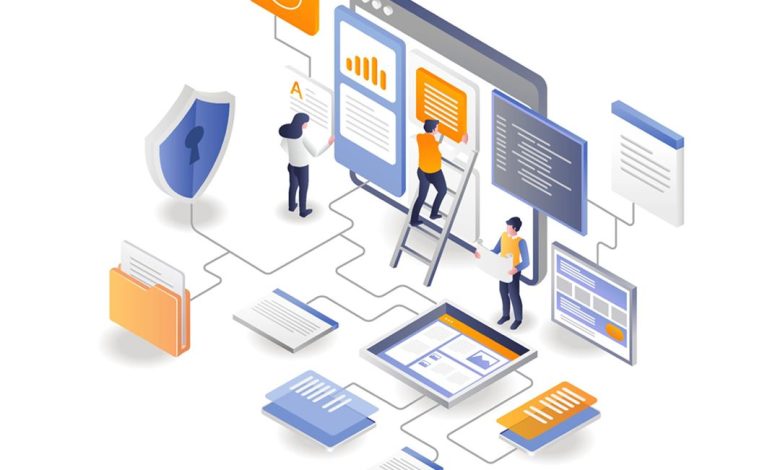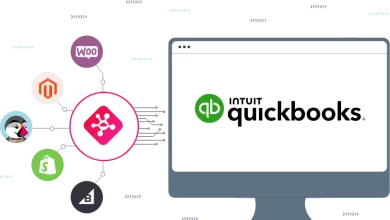Website Accessibility: Designing for Inclusive User Experiences

The internet has become an integral part of our daily lives, providing access to information, services, and products at our fingertips. However, not everyone can easily navigate and interact with websites due to various disabilities and impairments.
This is where Website Design accessibility comes into play – the practice of designing and developing websites that can be used by people of all abilities.
In this article, we will explore the importance of website accessibility, the laws and guidelines surrounding it, key principles, common barriers, techniques for designing accessible websites, and the benefits it brings.
Understanding Website Accessibility
What is website accessibility?
Website accessibility refers to the inclusive design and development practices that ensure people with disabilities can access and navigate websites effectively. It involves removing barriers that might prevent individuals with visual, auditory, physical, or cognitive impairments from fully experiencing and interacting with web content.
The importance of website accessibility
Website accessibility is crucial for creating inclusive user experiences. It ensures that everyone, regardless of their abilities, can access and utilize the information and functionalities provided by a website.
By making websites accessible, we promote equal opportunities, foster inclusivity, and empower individuals with disabilities to participate fully in the digital world.
Laws and Guidelines for Website Accessibility
To ensure equal access and prevent discrimination, several laws and guidelines have been established to govern website accessibility.
Americans with Disabilities Act (ADA)
The Americans with Disabilities Act (ADA) is a civil rights law that prohibits discrimination against individuals with disabilities. While the ADA does not explicitly mention websites, courts have interpreted it to apply to online platforms. Therefore, businesses and organizations are expected to make their websites accessible to individuals with disabilities to comply with ADA regulations.
Key Principles of Website Accessibility
Designing for website accessibility involves adhering to key principles that address different aspects of user experience for individuals with disabilities.
Perceivability
Perceivability ensures that web content is presented in a way that can be perceived by all users. This includes providing alternative text for images, captions for videos, and text alternatives for non-text content.
Operability
Operability focuses on making websites navigable and operable by a variety of input devices, such as keyboards, assistive technologies, and voice commands. It involves implementing clear and consistent navigation, keyboard accessibility, and functionalities that do not rely solely on mouse interactions.
Understandability
Understandability aims to ensure that the content and interface of a website are easily understandable. This involves using clear and concise language, organizing content in a logical manner, and providing instructions and feedback that are easy to comprehend.
Robustness
Robustness refers to the ability of a website to adapt and function correctly across different devices, browsers, and assistive technologies. By adhering to web standards and using semantic markup, websites can maintain their accessibility as technologies evolve.
Common Website Accessibility Barriers
Certain disabilities and impairments can pose challenges when it comes to accessing and using websites. Understanding these barriers is crucial for designing inclusive user experiences.
Visual impairments
Individuals with visual impairments may rely on screen readers or magnification tools to access web content. Websites should be designed with proper heading structures, descriptive alternative text for images, and sufficient color contrast to accommodate their needs.
Hearing impairments
People with hearing impairments may require captions or transcripts for multimedia content that includes audio. Providing text alternatives and ensuring the availability of closed captions or transcripts allows them to access and understand the information presented.
Motor impairments
Motor impairments can affect a person’s ability to use a mouse or keyboard effectively. Designing websites with keyboard accessibility in mind, providing sufficient interactive elements spacing, and implementing features such as skip links can enhance usability for individuals with motor impairments.
Cognitive impairments
Cognitive impairments may affect a person’s ability to process and understand information quickly. Websites should focus on presenting content in a clear and organized manner, using simple language, and avoiding complex navigation or excessive distractions.
Techniques for Designing an Accessible Website
Creating an accessible website involves employing various techniques that address the specific needs of individuals with disabilities. Here are some key techniques to consider:
Use proper heading structure
Implementing a logical heading structure helps users navigate through the content more efficiently, especially for screen reader users. Properly structured headings (H1, H2, H3, etc.) provide a hierarchical outline of the page’s content.
Provide alternative text for images
Adding descriptive alternative text to images enables individuals who cannot see the visuals to understand the context. Screen readers can read out this alternative text, making the information accessible to visually impaired users.
Ensure color contrast
Maintaining sufficient color contrast between text and background is essential for users with visual impairments. It ensures that text is legible and distinguishable, allowing everyone to read the content comfortably.
Implement keyboard accessibility
Keyboard accessibility enables individuals who cannot use a mouse or other pointing devices to navigate and interact with a website using only the keyboard. This is crucial for people with motor impairments. Designing websites with focus indicators, ensuring logical tab order, and providing keyboard shortcuts are effective techniques.
Provide clear and concise content
Creating content that is clear, concise, and easy to understand benefits all users, including those with cognitive impairments. Using plain language, breaking down complex concepts into digestible chunks, and avoiding jargon or technical terms can improve comprehension for a wider audience.
Improved user experience for everyone
Designing for accessibility often results in a better user experience for all users, not just those with disabilities. Clear navigation, well-structured content, and easy-to-use interfaces enhance usability and make it easier for users to find the information they need quickly.
Expanded audience reach
By making your website accessible, you can reach a broader audience, including individuals with disabilities. This not only increases your potential user base but also demonstrates your commitment to inclusivity, which can enhance your brand reputation and attract more customers.
Legal compliance and avoiding lawsuits
Ensuring website accessibility is not only a moral obligation but also a legal requirement in many jurisdictions. Non-compliance with accessibility guidelines can lead to legal issues and costly lawsuits. By proactively designing for accessibility, you mitigate the risk of legal complications and demonstrate compliance with applicable laws and regulations.
Tools and Resources for Testing Website Accessibility
Testing the accessibility of your website is essential to identify and address any potential barriers. Several tools and resources are available to assist you in this process:
Automated testing tools
Automated testing tools, such as WAVE, Axe, and Lighthouse, can scan your website for accessibility issues. They provide reports highlighting areas that require attention, such as missing alternative text, improper heading structures, or color contrast problems. While these tools are useful, they should be complemented with manual testing for a comprehensive evaluation.
Manual accessibility testing
Manual accessibility testing involves performing real-world user interactions to assess the accessibility of your website. This can include testing with assistive technologies like screen readers, magnifiers, or voice input systems. Manual testing allows you to experience the website from the perspective of individuals with disabilities and identify potential issues that automated tools may miss.
Assistive technologies
Assistive technologies, such as screen readers like JAWS or NVDA, can simulate the experience of users with visual impairments.
Conclusion
Website accessibility is an essential aspect of designing inclusive user experiences. By considering the needs of individuals with disabilities, adhering to accessibility guidelines, and employing appropriate design and development techniques, Rangemakers create websites that are accessible to all users.
The benefits of website accessibility extend beyond compliance with laws and regulations. They encompass improved user experiences, expanded audience reach, and a commitment to inclusivity.
By prioritizing accessibility, businesses can foster equal opportunities, enhance brand reputation, and provide a positive online experience for everyone.
FAQs
How does website accessibility benefit businesses?
Website accessibility benefits businesses by expanding their audience reach, improving user experience for all, and ensuring compliance with legal requirements. It enhances brand reputation and fosters inclusivity.
Are there any penalties for non-compliance with accessibility guidelines?
Yes, non-compliance with accessibility guidelines can result in legal issues and lawsuits. Penalties vary depending on the jurisdiction and applicable laws.
Can website accessibility be added to an existing website?
Yes, website accessibility can be added to an existing website. It may require making adjustments and modifications to meet accessibility standards.
Is it necessary to prioritize website accessibility in the design phase?
Yes, it is highly recommended to prioritize website accessibility from the design phase. Considering accessibility early on ensures that it is integrated seamlessly into the






